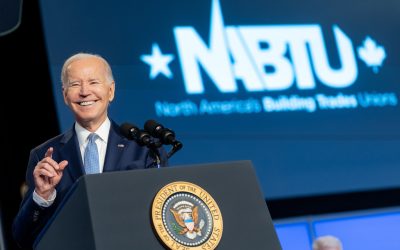By Stephen Plafker
In the first part of this article, I summarized the history of the Constitution and the Bill of rights with emphasis on the Ninth Amendment which reads as follows: “The enumeration in the Constitution, of certain rights, shall not be construed to deny or disparage others retained by the people.” I concluded: “Thus, it is clear that the Constitution was designed to advance the sole purpose of government: ‘to secure . . . rights.’ And that no rights should be omitted.” In the second part, I summarized the way the Supreme Court has discussed natural rights. This discussion showed a general deterioration in the treatment of natural rights culminating in a denial of their existence. At the end of the first part, I asked: “Given this history, why do American governments today think their main function is to violate rights?” In this part, I answer this question.
__________________________________
Part 3: Bork’s Blot
Before the Civil War, there was no significant federal litigation on the Bill of Rights. The basic reason was that the Bill of Rights originally restricted the federal government, not the states,1 and almost all violations of rights were done by the states. Almost all the important cases involved attacks on state laws under the Contract Clause of the Constitution.2
There were only two antebellum Supreme Court cases holding federal laws unconstitutional. The first involved a minor technical rule of jurisdiction.3 The second, decided 54 years later, was the infamous Dred Scott4 case in which the Supreme Court stated
a conclusion clearly wrong and disastrous.
The Ninth Amendment has never been the basis of any case decided by the Supreme Court. A constitutional expert, Knowlton H. Kelsey, assigns five possible reasons:
(1) All essential human rights may have been covered by the express declarations
of right in the original Constitution or in the other amendments. (2) All essential
human rights, not enumerated may be covered by the limits of or limitations upon
the express and grant of powers. (3) Any additional rights thought to have been
protected thereby may have been covered by judicial construction and extension
of expressly enumerated rights, especially those under the Fifth Amendment, to
cover not only the general classifications of rights catalogued by the great
commentators, but also all proper subdivisions and refinements thereof.
(4) Other rights may exist which have not heretofore been invaded, or which
have not heretofore been vindicated by the ingenuity of the legal profession or the discernment of the courts. (5) Rights not expressly enumerated may have
been extinguished by long acquiesce of the people in legislative extension of
Federal power or by judicial decisions on the extent of power.5
The biggest reason is an extension of (5): The legal profession today does not believe in, or understand, rights. This fact interferes with the ability of courts to decide cases involving the more particular rights, but it makes enforcement of the Ninth Amendment impossible.
Consider, for example, a free speech case. A court can determine whether a particular law reduces a person’s ability to express or publicize his opinion. Doing so may require judgment, but it can be done. Free speech cases are therefore capable of being decided by the application of manageable judicial criteria.
But how is one to apply the Ninth Amendment? One commentator, Norman Redlich, describes his method as follows:
Let us consider a few examples. The right of employees to contract with
employers concerning hours of work, which was the right upheld in Lochner v.
New York, hardly fits into the scheme of rights set forth in our Constitution.
But the right of a married couple to maintain the intimacy of their marital relationship
free from the criminal sanction of the state does fit into the pattern of a society
which set forth in its national charter that men should be free from unreasonable
searches and seizures. Similarly, the state might sterilize an individual upon clear
and convincing proof that this particular individual possesses inheritable
characteristics likely to produce criminal conduct or insanity. But if the Government
were to enforce a policy of selective breeding, designed to produce a genetically
superior race, the individual could claim that among the rights reserved to the
people is the right freely to choose a spouse and to produce children. Only
through the most obnoxious invasion of personal privacy could such a program
be enforced. Moreover, a Constitution which specifically provides that a person
guilty of treason could not be deprived of the right to transmit property would
hardly countenance taking from law-abiding citizens the right to transmit life.6
Why include some rights but not others? No answer.
This is the consequence of the absence of a theory of rights. Professor Redlich wants, but is unable, to provide any judicially manageable rules to decide cases under the Ninth Amendment. He is only able to provide a list of results he likes and compare them with those he doesn’t.
Robert Jackson, a distinguished former Justice of the Supreme Court tells this story.
A lawyer friend asked me in a friendly way what I thought the Ninth Amendment
to the Constitution meant. I vainly tried to recall what it was . . . . What are those
other rights retained by the people? To what law shall we look for their source
and definition? . . . [T]he Ninth Amendment rights which are not to be disturbed
by the Federal Government are still a mystery to me.7
As a result
There is an understandable reluctance to open the Pandora’s box of judicial review
of such an open-ended provision as the Ninth Amendment. Some fear that giving
any real effect to the Ninth Amendment would provide a “bottomless well in
which the judiciary can dip for the formation of undreamed of ‘rights’ in their
limitless discretion” and would permit judges to impose their purely subjective
preferences on the people, and that judicial review would quickly become judicial
supremacy and tyranny.8
Former Justice Hugo Black, an honest (non-power lusting) judge, concluded that enforcement of non-enumerated rights must be based
on the premise that this Court is vested with power to invalidate all state laws
that it considers to be arbitrary, capricious, unreasonable, or oppressive, or on
this Court’s belief that a particular state law under scrutiny has no “rational or
justifying” purpose, or is offensive to a “sense of fairness and justice.” If these
formulas based on “natural justice,” or others which mean the same thing, are
to prevail, they require judges to determine what is or is not constitutional on
the basis of their own appraisal of what laws are unwise or unnecessary.9
In the present philosophical climate, Justice Black is right. The most likely “rights” for modern judges to find are the “right” to a minimum income, the “right” to an education, the “right” to live where one chooses, . . . 10 Until the courts begin to use something like Objectivist principles, having judges determine rights is dangerous.
Robert Bork, a nominee to the Supreme Court testified:
I do not think you can use the Ninth Amendment unless you know something of
what it means. For example, if you had an amendment that says “Congress shall
make no” and then there is an ink blot, and you cannot read the rest of it, and that
is the only copy you have, I do not think the court can make up what might be
under the ink blot.11
This statement is correct. To interpret, one needs to understand. The American system needs Ayn Rand.
First, to understand the concept of rights:
A “right” is a moral principle defining and sanctioning a man’s freedom of action
in a social context. There is only one fundamental right (all the others are its
consequences or corollaries): a man’s right to his own life. Life is a process of
self-sustaining and self-generated action; the right to life means the right to
engage in self-sustaining and self-generated action—which means: the freedom
to take all the actions required by the nature of a rational being for the support,
the furtherance, the fulfillment and the enjoyment of his own life. (Such is the
meaning of the right to life, liberty, and the pursuit of happiness.)The concept of a “right” pertains only to action—specifically, to freedom of action.
It means freedom from physical compulsion, coercion or interference by other men.Thus, for every individual, a right is the moral sanction of a positive—of his
freedom to act on his own judgment, for his own goals, by his own voluntary,
uncoerced choice. As to his neighbors, his rights impose no obligations on
them except of a negative kind: to abstain from violating his rights.12
Second, to understand how they can be violated:
Man’s rights can be violated only by the use of physical force.13
Finally, to understand the proper function of government.
If physical force is to be barred from social relationships, men need an
institution charged with the task of protecting their rights under an objective
code of rules.This is the task of a government—of a proper government—its basic task,
its only moral justification and the reason why men do need a government.14
To say the government is violating a right is to say it is initiating force rather than protecting its citizens from the initiation of force. This is a judicially manageable criterion. Only when the legal system is based on these principles can the Ninth Amendment properly be implemented.
__________________________________
References:
1. Barron v. Baltimore, 7 Peters 243, 8 L.Ed. 672 (1833)
- “No State shall . . . pass any . . . law impairing the obligation of contracts . . . Article 1, Section 10
- Marbury v. Madison, 1 Cranch 137 (1803)
- Scott v. Sandford, 19 How. 393 (1857)
- Knowlton H. Kelsey, The Ninth Amendment of the Federal Constitution, 11 Ind. L.J. 309 (1936), reprinted in Barnett (Ed.), The Rights Retained by the People, The History and Meaning of the Ninth Amendment, George Mason University Press (1989) (hereinafter “Barnett”) at 103-4
- Norman Redlich, Are There “Certain Rights . . . Retained by the People”?, 37 N.Y.U.L.Rev. 787 (1962), reprinted in Barnett, supra n. 5 at 145 (footnotes omitted)
- Eugene M. Van Loan III, Natural Rights and the Ninth Amendment, B.U.L.Rev. (1968), quoting from Robert Jackson, The Supreme Court and the American System of Government 74-75 (1955)
- Randy E. Barnett, “Introduction: James Madison’s Ninth
Amendment” from Barnett, supra, n. 5, at 25-26 (footnotes omitted) - Black, J., dissenting in Griswold v. Connecticut, 381 U.S. 479, 511 (1965) (footnotes omitted)
- Anyone who thinks these examples are fanciful might consider Shapiro v. Thompson, 394 U.S. 618 (1969)
- Barnett supra note 5, quoting from Wall St. J., Oct. 5, 1987, §A, at 22
- Ayn Rand, “Man’s Rights” in Capitalism: The Unknown Ideal (hardcover edition) at 288
- Ayn Rand, “The Nature of Government” in Capitalism: The Unknown Ideal (hardcover edition) at 296
- Id. at 297
Copyright © The Association for Objective Law. All rights reserved. Republished in Capitalism Magazine by permission of TAFOL.



